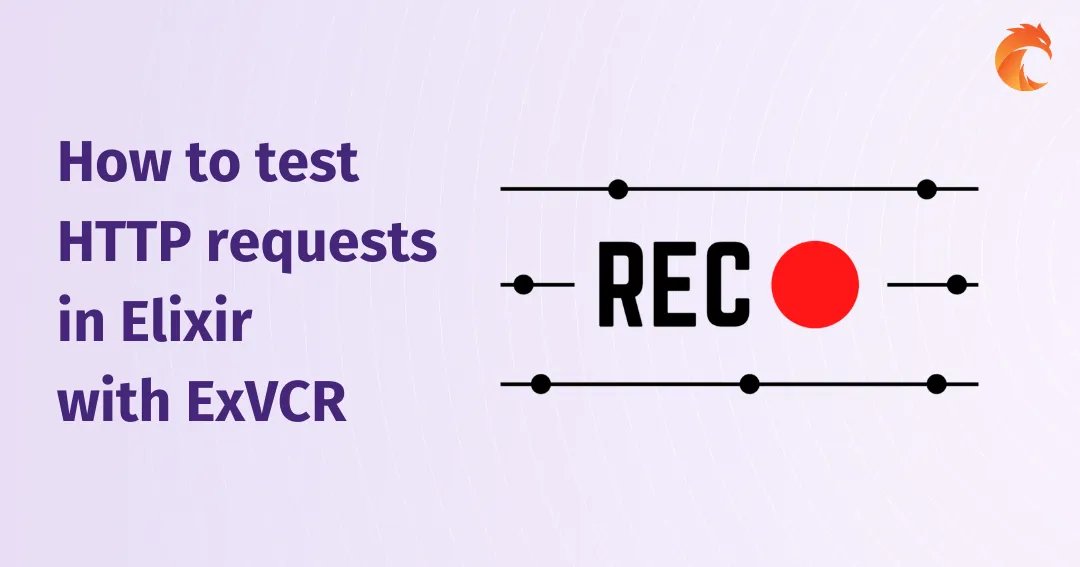Multi-node Communication & Strategies in Elixir - Mika Kalathil - Elixir Meetup #9


Discover the power of multi-node communication in Elixir with Mika Kalathil. Learn how to connect nodes, manage clusters, and leverage built-in tools for scalable applications.
Introduction
In Elixir Meetup #9, Mika Kalathil presents an in-depth exploration of multi-node communication and strategies in Elixir. Drawing from his extensive experience, Mika demonstrates how to connect nodes, manage clusters, and utilize built-in tools to scale Elixir applications effectively.
About Mika Kalathil
Mika Kalathil is the Chief Architect at Blitz.gg, where he oversees systems serving millions of users and processing over a billion rows daily. With nearly eight years of experience using Elixir, Mika also runs learn-elixir.dev, where he shares lessons learned from his extensive experience with Elixir and large-scale systems.
The Power of Multi-node Communication
Introduction to Multi-node Communication
Mika begins by discussing the importance of multi-node communication in Elixir. He emphasizes that many companies do not fully leverage multi-node environments, often sticking to single-node setups or minimal redundancy. Mika aims to demonstrate the ease and benefits of connecting multiple nodes in Elixir.
Key Benefits:
- Scalability: Easily add new nodes to handle increased load.
- Redundancy: Improve system reliability with multiple nodes.
- Efficiency: Utilize Elixir's built-in tools for seamless node communication.
Connecting Nodes in Elixir
###Basic Node Connection Mika explains how connecting nodes in Elixir is straightforward, thanks to the built-in tools provided by the language. He highlights that any form of communication between nodes, such as a node.ping or a message send, establishes a bi-directional connection.
Key Points:
- Node Communication: Any communication method connects nodes.
- Cluster Formation: Communication forms a cluster, enabling multi-node interactions.
Tools for Cluster Management
Net Admin and Lib Cluster
Mika introduces two essential tools for managing clusters: Net Admin and Lib Cluster. He explains how these tools simplify the process of setting up and managing clusters, making it easy to scale applications horizontally.
Net Admin:
- Built-in Erlang Tool: Provides functions like world and host_file to manage nodes.
- Ease of Use: Simplifies the process of connecting nodes using a host file.
Lib Cluster:
- Advanced Strategies: Offers various strategies like EPMD and DNS poll for efficient node connection.
- Efficiency: Reduces overhead by connecting only necessary nodes.
Practical Cluster Setup
Example: Setting Up a Cluster
Mika demonstrates how to set up a cluster using Net Admin and Lib Cluster. He provides a step-by-step guide, showing how to define a host file, use Net Admin to connect nodes, and leverage Lib Cluster for advanced strategies.
Key Steps:
- Define Host File: List node addresses in a host file.
- Use Net Admin: Call net_adm:world() to connect nodes.
- Implement Lib Cluster: Set up strategies like EPMD for efficient node management.
Communicating Between Nodes
Process and Kernel Send
Mika explains the basic method of sending messages between nodes using process.send and kernel.send. He demonstrates how to register processes by name and send messages across nodes, highlighting the simplicity and power of these built-in functions.
Example:
- Register Process: Use IEX to register a process by name.
- Send Message: Send a message from one node to another and receive a response.
GenServer and ERPC
Mika dives into more advanced methods of node communication using GenServer and ERPC. He explains how to set up GenServers for inter-node communication and leverage ERPC for executing remote code, which is more scalable and efficient.
GenServer:
- Set Up GenServer: Define and start a GenServer to handle inter-node messages.
- Use Calls and Casts: Send calls and casts to GenServers across nodes.
ERPC:
- Execute Remote Code: Use ERPC to execute code on remote nodes, bypassing single process limitations.
- Scalability: Scale applications by distributing workloads across multiple nodes.
Conclusion
Mika Kalathil's presentation at Elixir Meetup #9 offers valuable insights into multi-node communication and strategies in Elixir. By leveraging built-in tools like Net Admin and Lib Cluster, developers can easily connect nodes, manage clusters, and scale their applications efficiently.
Join the Community
Ready to deploy your Elixir applications with Kubernetes? Register for the next Elixir Meetup at Curiosum Meetups: Registration Join our community of Elixir enthusiasts at Elixir LinkedIn Group Prefer watching the presentation? Here’s the video
Related posts
Dive deeper into this topic with these related posts
You might also like
Discover more content from this category
Elixir and its ecosystem is gradually becoming the go-to platform for many web application developers who want both performance and productivity without a tradeoff.
Join Samuel Pereira at Elixir Meetup #11 with the topic of gRPC, comparing it with REST and demonstrating how to implement gRPC in Elixir. It's for developers looking to optimize communication between microservices and improve app performance.
As your app grows so does its integrations base. At some point, you may need to consume API from third-party services. Today you'll learn how to test them properly with the exvcr library.




